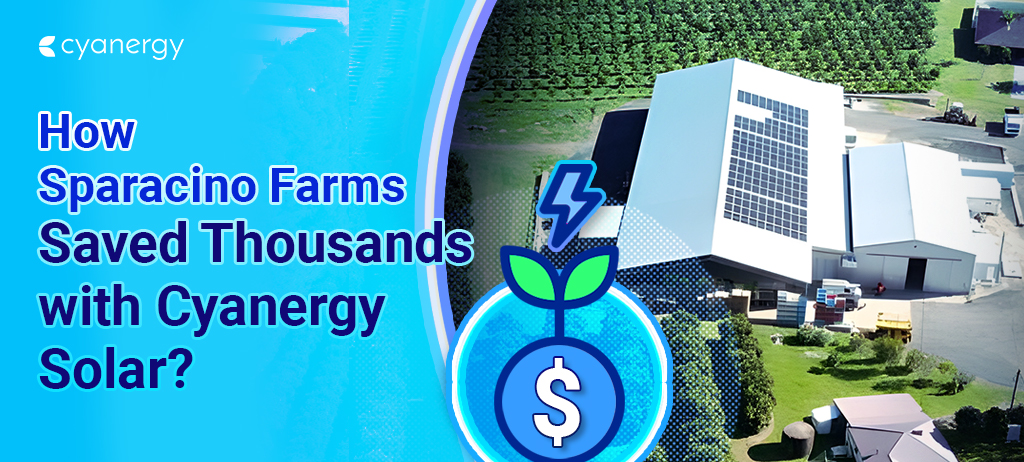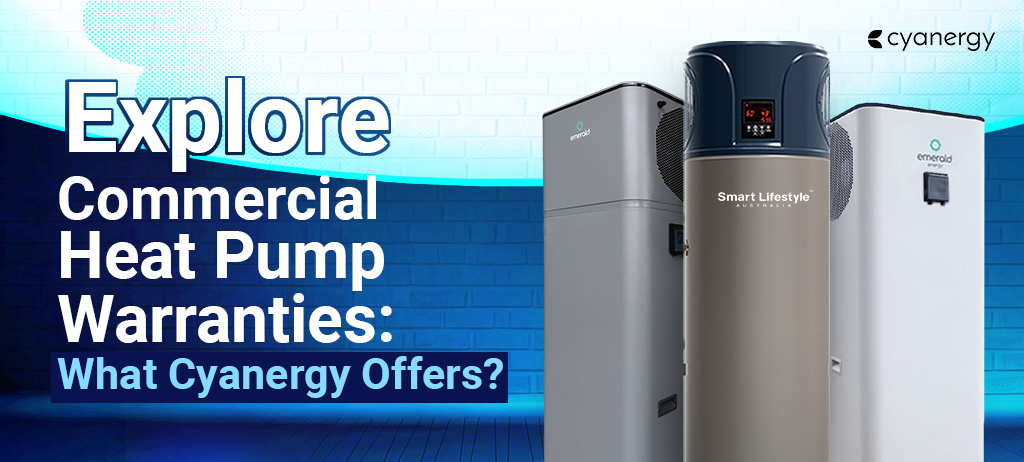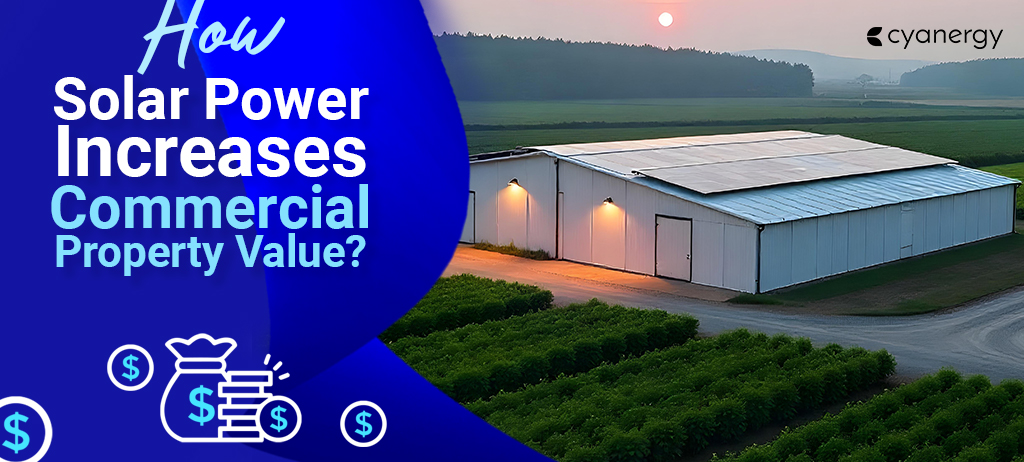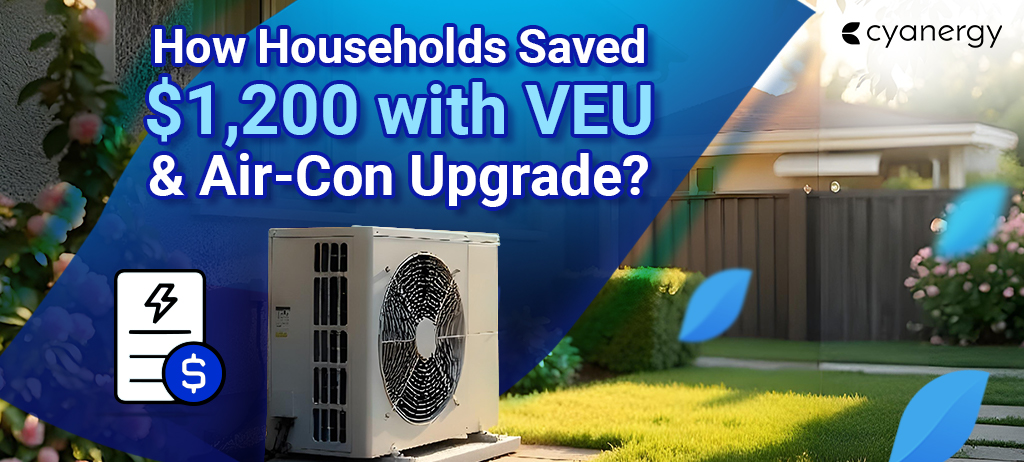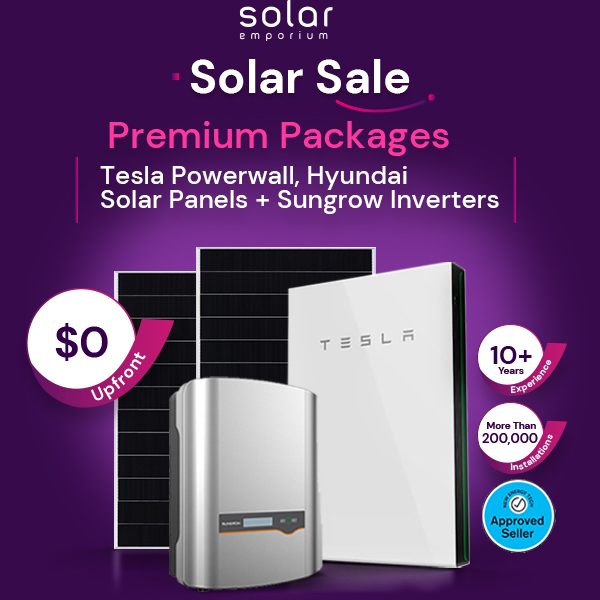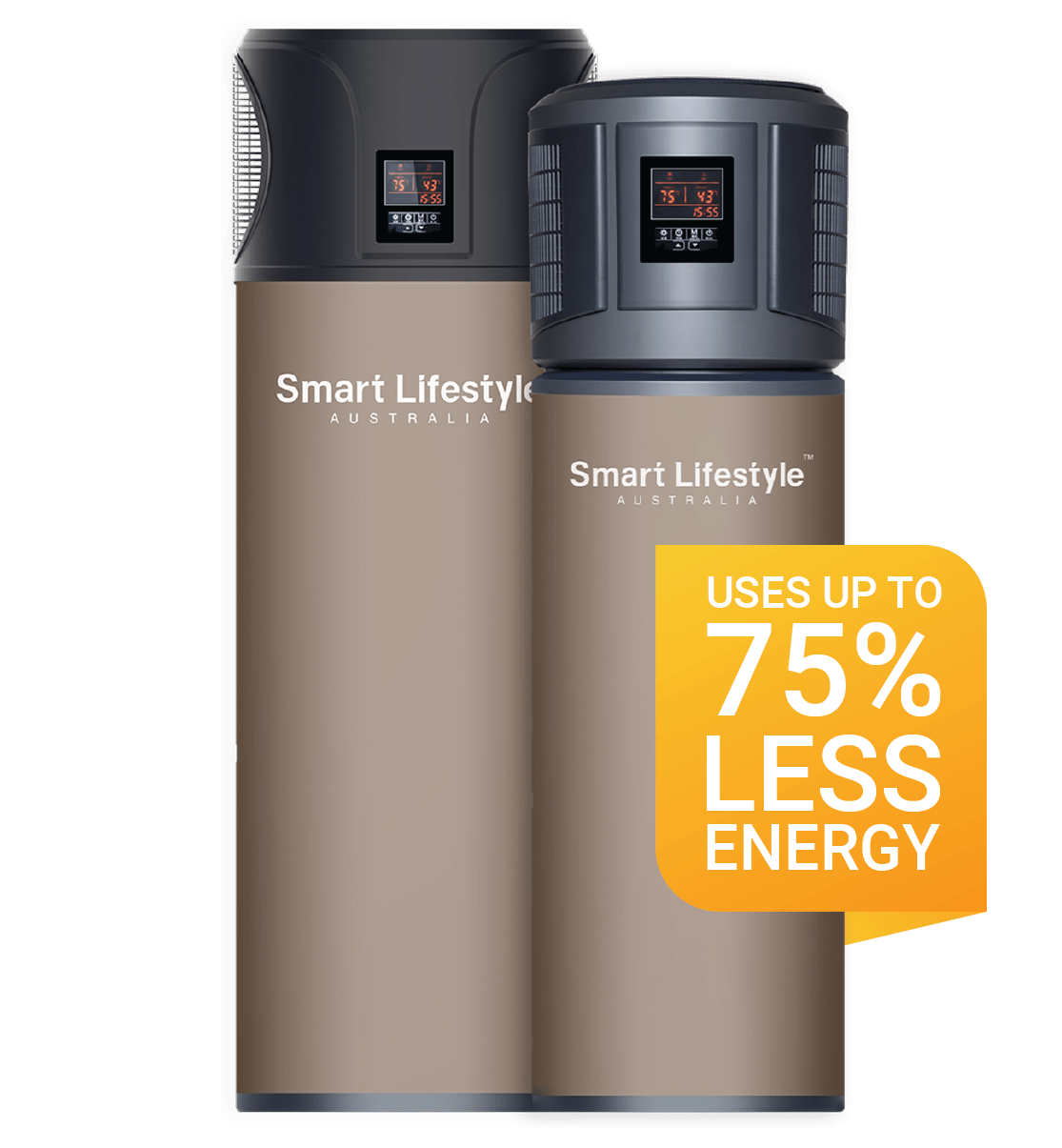Installing a solar panel system can be a significant investment. A solar panel system can cost Australian homeowners around $5,000 to $14,000. Government and state rebates and incentive programs can help reduce this cost.
But homeowners still pay a substantial amount to enjoy lower electricity bills. Fortunately, there are various options available to make solar energy more affordable.
Knowing about all types of solar panels will give you the freedom to choose from a variety of options.
Solar panel solutions fit every budget, from cost-effective polycrystalline panels to premium and elegant monocrystalline cells.
Here is the ultimate guide to all types of solar panels in Australia, helping you find the most suitable panels for your home and financial needs.
In this blog post:
- What Are Solar Panels?
- Looking Back on Solar Panels
- What Are The Main Types of Solar Panels?
- Which solar panels are considered the best?
- Different Types of Solar Panel Efficiency Ratings
- The capacity of Different Solar Panels
- How to Select the Right Solar Panel for Your Home?
- What Are The Best Solar Panel Brands In Australia?
What Are Solar Panels?
Solar panels are devices that capture and convert sunlight into usable electricity. They use two semi-conductive materials. Usually, silicon is sandwiched between a metal or glass.
As sunlight passes through the semiconductive material, electrons get dislodged from the atoms. And it results in a small electrical current. The current is captured and used to power your home or stored in a solar battery. This process is also known as the photovoltaic effect.
Looking Back on Solar Panels
The history of solar panels dates back to 1839, when French scientist Edmond Becquerel first observed the photovoltaic effect. In 1883, Charles Fritts developed the first solar cell, leading to further experimentation with solar-capturing technology by scientists worldwide.
The breakthrough came in the 1950s when Bell Labs discovered silicon was a far more efficient semiconductor than the previously common selenium used in solar panels. Since then, solar panels have undergone continuous improvements with remarkable innovations.
What Are The Main Types of Solar Panels?
Solar panel technology has seen many advancements. And now it’s available for all average Australian households. Nowadays, a wide range of more budget-friendly panels are available. Let’s get to know all of them today!
Monocrystalline Solar Panels
Monocrystalline solar cells are also known as modules. These represent the top tier in solar technology. They are made from a single sheet of monocrystalline silicon crystal using an expensive manufacturing process.
These panels are created from a single bar of pure silicon, then cut and shaped into 32 to 96 silicon wafers. And these wafers are solar panels. However, due to the cutting process, a massive amount of silicon is wasted. And it makes production costly but efficient.
Monocrystalline panels are black. These panels are highly efficient, have higher wattage, longer lifespan, and are the most expensive option. They can capture about 19% to 22% of incoming photons.
There are various options among monocrystalline panels, including Passivated Emitter/Rear Cell (PERC) panels, Heterojunction Solar Cells, and Bifacial Panels.
Passivated Emitter and Rear Cell Panels
PERC panels represent an improvement over standard monocrystalline panel technology. They add a layer of reflective material to the back of the panel, which allows the silicon to capture more photons.
This design has various minor benefits. They reduce electron recombination and heat. PERC cells are slightly more efficient and have a longer lifespan. These panels absorb around 21% to 23% of incoming photons.

Heterojunction Solar Cells
Heterojunction cells combine two solar panel technologies to increase efficiency. These panels add a layer of amorphous silicon that absorbs more wave frequency and complements the crystalline silicon to boost efficiency.
However, these cells require unique manufacturing and are considerably expensive. Nevertheless, the extra cost comes with a significant efficiency boost, as they absorb between 23% to 26% of incoming photons.
Bifacial Panels
Bifacial panels are more efficient than standard monocrystalline panels but require more effort. They have two solar-absorbing faces. The second face is positioned at the back of the panel to absorb reflected light. Otherwise, that would be wasted.
However, they are not suitable for flat surfaces, such as roofs. Homeowners can install these panels on a section of their property, typically on the ground. When used properly, these panels can achieve an efficiency of up to 27%.
The most efficient bifacial panels are made from monocrystalline materials. However, polycrystalline bifacial panels are also available in the solar market.
Polycrystalline Solar Panels
Polycrystalline solar cells, also known as multicrystalline panels, offer a more budget-friendly approach.
These solar cells are created from multiple shards of silicon fragments that are melted down and poured into small square wafer moulds. The panels are dark blue, speckled in colour.
Polycrystalline panels have a lower price tag because the production process creates less silicon waste. Consequently, it makes them more accessible and cheaper to manufacture.
However, these silicon solar cells have a shorter lifespan and lower heat tolerance. They also have a lower efficiency rating. These can capture only between 13% and 17% of photons.
Thin-Film Solar Panels
Thin-film solar cells are an umbrella term encompassing several types of solar panels. These panels are typically thin, flexible, affordable, and commonly used in industrial or commercial applications.
Some homes may also use thin-film solar panels on their roofs if they have unusual shapes or cannot support the weight of standard panels. Thin-film solar panels typically have an energy efficiency rating of 7% to 18%. However, it depends on the specific type.
Cadmium Telluride (CdTe) Panels
Cadmium telluride is the most common thin-film panel on the market, accounting for approximately 5% of the global solar panel market. These panels can achieve an efficiency rating of 9% to 15%.
They are made from cheaper materials such as cadmium telluride, cadmium sulphide, or magnesium sulphide. Unfortunately, these low-cost materials are also toxic and can harm the environment and human health.
Amorphous Silicon (A-Si) Panels
Amorphous silicon panels utilise a technology similar to that of standard silicon panels, but with greater flexibility. Instead of using crystalline silicon wafers, these panels use a thin silicon strip with a texture resembling rubber.
These are incredibly lightweight, versatile, non-toxic, and cheap, but have low efficiency. These panels typically have an efficiency rating of about 7%.
Copper Indium Gallium Selenide (CIGS) Panels
CIGS panels are the most efficient thin-film panels available. They are composed of copper, gallium, indium, and selenide layers placed on top of a base of steel, glass, plastic, and other materials.
They can be installed where standard panels cannot fit. CIGS panels are also used in solar shingles and similar rooftop solar technologies. They have an efficiency rating of 12% to 15%. Ideal lab conditions can be as high as 20%.
Which solar panels are considered the best?
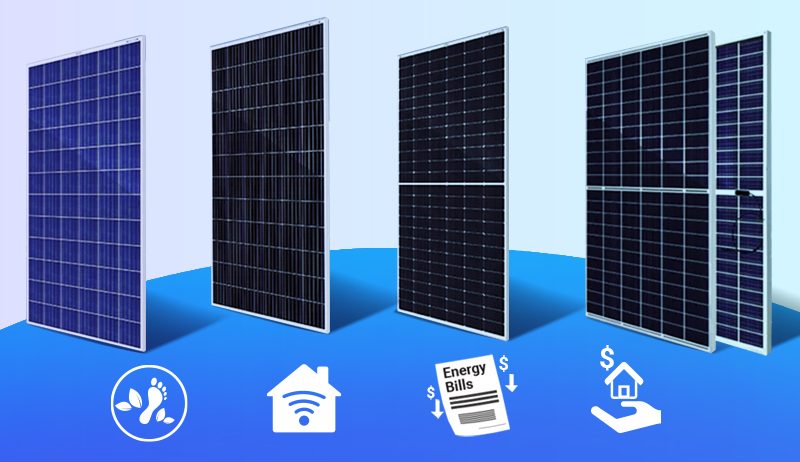
Monocrystalline solar panels are more popular for rooftop solar installations due to their higher efficiency than polycrystalline or thin-film solar panels. However, some buyers may need clarification about their increased costs.
Selecting the best panel type for your home primarily depends on personal preferences, particularly in terms of visual aesthetics. Some may prefer sleek, uniformly coloured panels, while others may opt for colourful, patchy panels with smaller gaps between cells.
Different Types of Solar Panel Efficiency Ratings
- Crystalline solar panels stand out as the most efficient among all panel types.
- Monocrystalline panels boast an efficiency rating of over 20%.
- PERC panels achieve an extra 5% efficiency due to their passivation layer.
- Polycrystalline panels typically have an efficiency range of 15% to 17%.
- On the other hand, thin-film panels usually exhibit 2% to 3% lower efficiency than crystalline silicon. On average:
- CIGS panels have an efficiency range of 13% to 15%.
- CdTe falls between 9% and 11%.
- A-Si has an efficiency range of 6% to 8%.
The capacity of Different Solar Panels
Monocrystalline cells offer the highest energy capacity because of their single-crystal form. This form enables a higher output rating in a smaller size. Most monocrystalline panels can generate up to 300 watts of power capacity.
Recent advancements in solar technology have allowed polycrystalline panels to narrow the gap. A standard 60-cell polycrystalline panel can now produce between 240 and 300 watts of power.
Due to their uneven sizes, thin-film panels still require a standardised measure of power capacity. The efficiency of one thin-film panel may differ from that of another based on its physical size.
How to Select the Right Solar Panel for Your Home?
Selecting the best solar panel for your home can seem overwhelming. However, here are some tips and tricks you can follow when choosing the types of solar panels:
Efficiency: Look for solar panels with higher efficiency ratings as they generate more electricity from the same amount of sunlight. Understand the different types of solar cells and their efficiency levels.
Cost: Consider your budget while choosing solar panels, but remember that a higher upfront cost may result in more significant long-term energy bill savings. Polycrystalline panels offer a more budget-friendly option for cost-conscious buyers than monocrystalline panels.
Warranty: Ensure the solar panel has a reliable warranty, ideally at least 25 years, to cover any potential defects or malfunctions.
Durability: Select panels that can withstand harsh weather conditions, including hail, wind, and snow. Solar panels with tempered glass and aluminium frames are more durable than those with plastic components.
Certification: Look for installers and sellers certified by recognised authorities, such as the Clean Energy Council (CEC), to ensure they meet quality and safety standards.
Seek Professional Advice: Research thoroughly and consult Cyanergy. We are a certified solar panel installer. With the guidance of many solar experts, we can help you save money and effectively reduce your carbon footprint. Get a free solar quote now!
By carefully considering these factors, you can select the most suitable solar panel type for your home, ensuring optimal energy generation and long-term sustainability.
What Are The Best Solar Panel Brands In Australia?
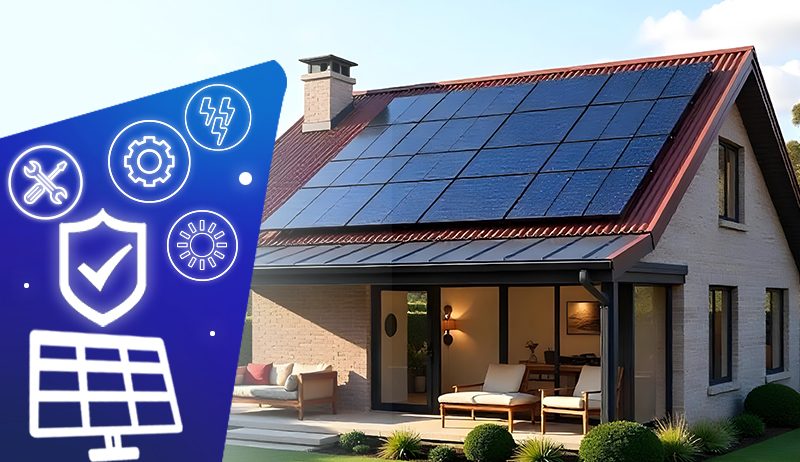
When considering solar panel brands, you might think of the concept of “tiers.” Tier 1 represents the highest-rated panels, and Tier 3 indicates low-quality products.
There is no universal ranking system. Various organisations, like financial analysis firms, independently rank solar panel brands.
Examining the source that claims to offer “tier 1” panels is essential because these organisations often have similar assessments.
The tier system generally reflects the investment potential of a solar panel brand rather than the actual quality of its panels.
The rankings take into consideration factors such as the company’s involvement in large-scale projects, manufacturing capacity, research, and development.
Here are some commonly featured Tier-1 solar panel brands in Australia:
- Canadian Solar
- Jinko
- LONGi
- QCells
- REC Group
- Sunpower
- Trina Solar
Contact Cyanergy to explore our affordable solar packages and discover our selection of Tier-1 solar panels.
